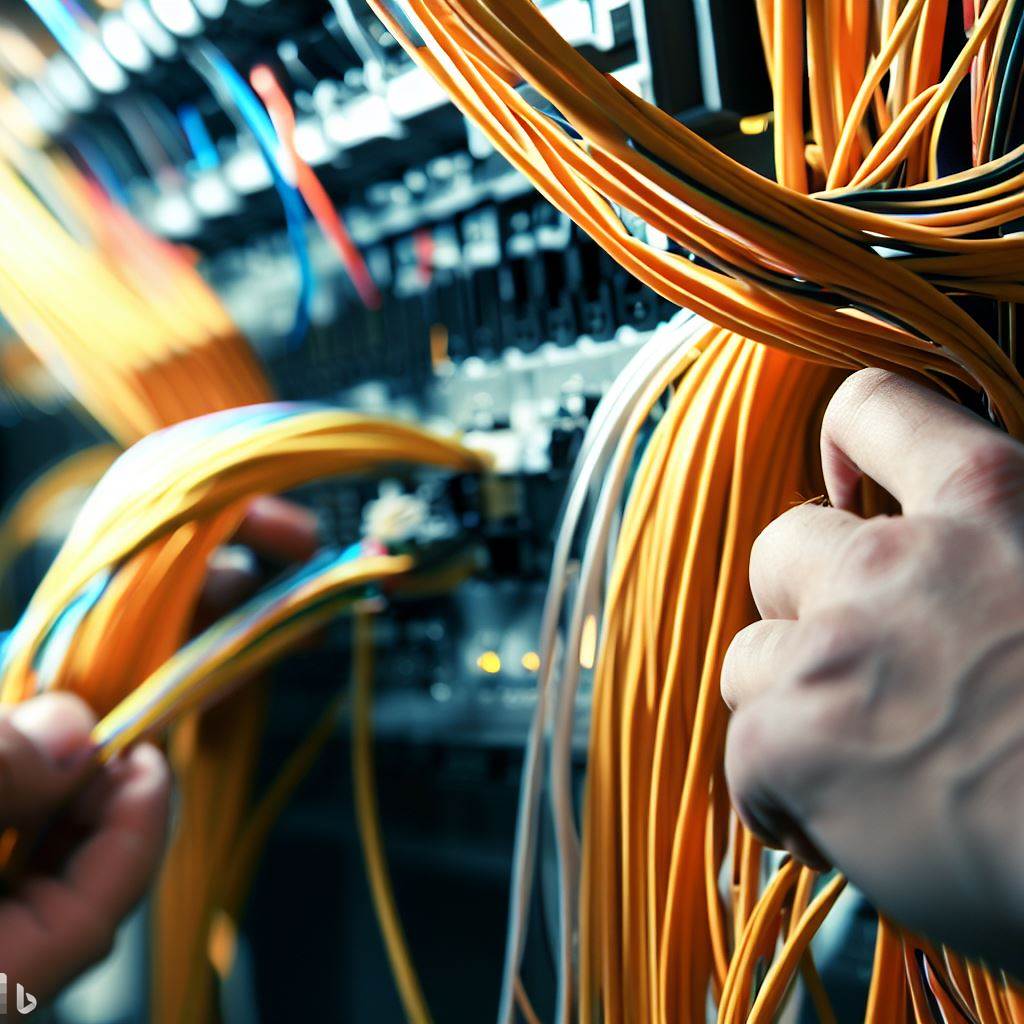
To ensure effective and organized network connectivity, various procedures must be taken while cabling a small to medium-sized office. Using terms like rack and stack, data centre, etc., here are the general steps:
- Design and Planning
- Analyze the needs of the network: Establish the number and locations of network devices, such as PCs, printers, servers, etc., in the office.
- Identify the cable routes: Plan the cable and pathway paths between the devices while taking into account variables like accessibility, distance, and potential interference.
- Determine the needs for the rack and stack: Select the size and quantity of network racks required to house the servers, switches, patch panels, and other networking hardware.
- Gather equipment and materials:
- Network racks: Invest in adequate network cabinets or racks that can safely contain networking equipment.
- Patch panels: To terminate and arrange the network wires inside the racks, get patch panels.
- Network switches: Based on the office’s connectivity needs, purchase network switches.
- Ethernet cables of the proper length should be gathered to connect the gadgets through the network. Use CAT6 or higher if you want better performance.
- Tools for managing cables: To maintain a neat and organized wiring system, purchase cable management accessories such as Velcro straps, labels, and cable ties.
- Tools and equipment: Have the right tools on hand for installation and troubleshooting, such as cable crimpers, cable testers, wire cutters, and screwdrivers.
- Setting up network racks
- Select appropriate locations: Choose the best locations to deploy the network racks while taking accessibility, power availability, and ventilation into account.
- Install the racks: Install the network racks firmly on walls or floors to provide stability and enough room for growth in the future.
- Installation of cables:
- Run cable pathways: To make specified courses for the wires to go, install conduits, raceways, or cable trays. Maintain a safe distance from electrical wires to avoid interference.
- cable termination at patch panels Connect each cable’s other end to the proper port on the patch panels that have been mounted in the network racks. To make identification simpler, use industry-standard color-coding systems and labeling conventions.
- Connecting equipment to patch panels: Utilizing short patch cables, install and connect the networking hardware (such as switches and servers) to the proper ports on the patch panels.
- Cable management:
- Organize cables: To neatly bundle and route wires inside the racks, use cable management accessories like cable ties, Velcro straps, and cable management panels.
- Cable labels: Each cable should have labels on both ends indicating its function, location, and corresponding ports.
- Manage cable slack: To control extra cable length, minimize tangles, and maintain a neat look, use cable management techniques like cable loops or cable management arms.
- Troubleshoot and Test:
- Testing cables: Check each cable’s connection and termination with a cable tester.
- Network testing: To guarantee proper data transfer and connectivity, connect devices to the network and run tests.
- Testing cable connections, setups, and network settings will help you find and fix any connectivity or performance issues.
- Maintain and Record:
- Record the network of cables: For reference and troubleshooting purposes in the future, compile a list of network components, cable paths, and connections.
- recurring upkeep: Make sure cables are securely fastened and appropriately labeled, then periodically inspect and organize them. Maintain documentation and make updates as the network is altered.
- Power Management:
- Power distribution: Ascertain the power needs of the networking hardware and make sure there is an adequate supply of power inside the network racks. To properly control power supply, take into account employing power distribution units (PDUs).
- Organizing power cord cables: Along with the data cables, manage and organize the power cords to preserve a clean appearance and avoid interference or unintentional disconnections.
- Secure access management:
- Physical security: Think about putting security measures in place to safeguard the network hardware and cabling infrastructure. Using lockable cabinets, security cameras, or limiting access to the network racks and data centre facilities are a few examples of how to achieve this.
- Integrate access control systems to limit physical access to the office and network hardware so that only authorized people can enter the defined locations.
For the greatest outcomes, it is advised to speak with professionals or adhere to applicable industry norms and rules. Keep in mind that particular office settings may have unique needs.
